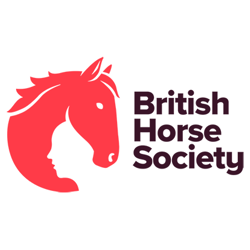Stage 2 Care
| Learning Outcome | Assessment Criteria | Guidance on the Content | Assessment Method |
|---|---|---|---|
| 1. Know about the roles, rights, and responsibilities of an Assistant Groom | 1.1 Describe the roles of the Assistant Groom |
Roles to include:
|
Discussion |
| 1.2 Describe the responsibilities of the Assistant Groom |
Responsibilities to include:
|
Discussion | |
| 1.3 Describe a range of legal requirements when working on a stable yard |
Range = 2 or more Legal requirements to include:
|
Discussion | |
| 2. Be able to fit tack and boots on a horse | 2.1 Fit a bridle and hunting breastplate |
Bridle:
|
Observation and discussion |
| 2.2 Put on a saddle and check the fit for comfort |
Check fit for comfort, include:
|
Observation and discussion | |
| 2.3 Fit brushing boots and overreach boots |
To include:
|
Observation and discussion | |
| 3. Be able to prepare a horse to travel | 3.1 Fit travel equipment to the horse |
Travel equipment to include:
|
Observation |
| 3.2 Handle a horse safely in preparation for loading |
Handle to include:
|
Observation and discussion | |
| 4. Know about horse behaviour | 4.1 Describe normal behaviour |
Normal behaviour to include:
|
Discussion |
| 4.2 Describe the signs of an unsettled horse |
Signs may include:
|
Discussion | |
| 4.3 Outline the factors that may cause a horse to become unsettled |
Range = 4 or more Factors may include:
|
Discussion | |
| 5. Understand how to feed horses | 5.1 Describe methods used to weigh a horse |
Methods may include:
|
Observation and discussion |
| 5.2 Explain a range of factors that may affect a horse's weight |
Range = 3 or more Factors:
|
Discussion | |
| 5.3 Describe how to estimate the amount of feed required for a horse |
To include:
|
Discussion | |
| 5.4 Explain how different work levels may affect the type of feed required |
Work levels:
|
Discussion | |
| 6. Know about basic horse anatomy | 6.1 Describe the function and components of the digestive system |
Function:
|
Discussion |
| 6.2 Identify the location of a range of key organs |
Range = 2 or more Key organs:
|
Observation and discussion | |
| 6.3 Identify a range of major bones of the skeletal system |
Range = 5 or more Major bones:
|
Observation and discussion | |
| 7. Understand horse fitness | 7.1 Describe the signs of an unfit horse |
Signs may include:
|
Discussion |
| 7.2 Explain the reasons for maintaining fitness |
Reasons to include:
|
Discussion | |
| 8. Be able to maintain a horse’s health | 8.1 Explain a range of routine health procedures |
Range = 2 or more Routine health procedures:
|
Discussion |
| 8.2 Demonstrate how to administer an oral horse treatment |
Administer to include:
|
Observation and discussion | |
| 8.3 Describe signs of lameness |
Signs may include:
|
Discussion | |
| 8.4 Describe a range of common types of wounds |
Range = 2 or more Common types:
|
Discussion | |
| 8.5 Explain a range of basic first aid procedures for wounds |
Range = 2 or more Basic first aid procedures:
|
Discussion | |
| 8.6 Put on stable bandages |
To include:
|
Observation and discussion | |
| 8.7 State instances when a vet needs to be called |
Instances may include:
|
Discussion | |
| 8.8 Describe a range of common health problems |
Range = 2 or more Common problems:
|
Discussion | |
| 8.9 Explain how to care for horses that are unwell |
Care to include:
|
Discussion | |
| 9. Be able to prepare a horse for presentation | 9.1 Describe a range of trimming procedures |
Range = 3 or more Trimming procedures:
|
Discussion |
| 9.2 Plait a mane |
To include:
|
Observation and discussion | |
| 10. Understand how to care for a horse’s feet | 10.1 Explain the reasons for shoeing and trimming a horse’s feet |
Reasons:
|
Discussion |
| 10.2 Describe how to remove a shoe from a horse |
To include:
|
Observation and discussion | |
| 10.3 Describe the signs of a well-cared for foot |
Signs:
|
Discussion | |
| 11. Understand the environment for keeping horses | 11.1 Explain a range of requirements for a turn out area |
Range = 2 or more Requirements:
|
Discussion |
| 11.2 Identify a range of potential hazards in a turn out area |
Range = 4 or more Potential hazards:
|
Discussion | |
| 11.3 Explain a range of requirements for a stable |
Range = 3 or more Requirements:
|
Discussion | |
| 11.4 Explain a range of potential hazards in a stable |
Range = 2 or more Potential hazards:
|
Discussion |
